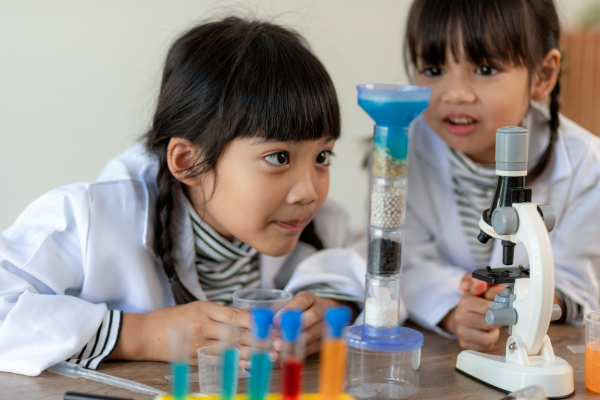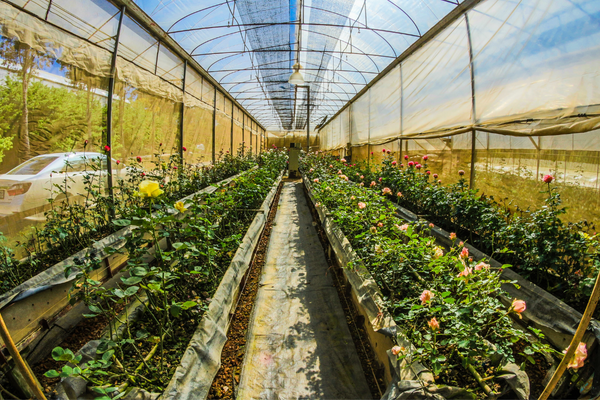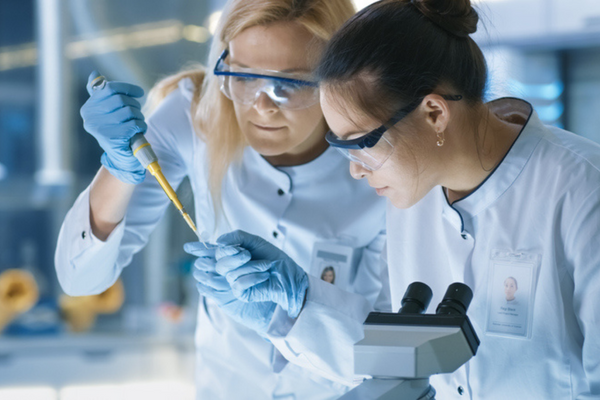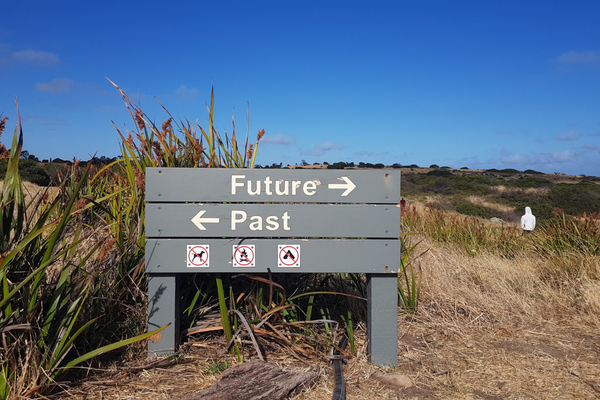
In a Corteva “Meet our Scientists” video, you state the following: “I would say that 95% of what we do certainly in early stage - in discovery - doesn’t go anywhere. It fails.” What advice do you give early career chemists at Corteva to help them cope with recurring disappointment?
The advice I give early career chemists and even experienced chemists is to celebrate every success regardless how small. We are really good at recognizing the big milestone advancements, but it is the day-to-day progress that can be really exciting. Showcasing these small victories more can go a long way to mitigating disappointment.
When I was in the lab, I was always optimistic about the “next” compound to be synthesized and tested and maybe even thought at times, “this is the one.” I received great satisfaction from designing the molecule to answer a particular question, preparing the compound and testing it to see if my hypothesis was correct. To me, the journey is as much fun as the big successes, and I encourage early career chemists to savor this as well.
Chemists in your line of work have something in common with medicinal chemists, who also have to learn to deal with ‘failure’ on a regular basis. How is the challenge agriscience confronts in finding new molecules different from the quest of the pharma industry?
This is a question we get quite often, and frankly, as an ag industry, we haven’t done a great job of highlighting what we do compared to the pharma industry. At Corteva, we are working to change this and increase awareness of the similarities and differences between Ag and Pharma.
As a result, people are beginning to realize there are more commonalities than differences. Our discovery process is very similar, if not almost identical, to the discovery process in Pharma. We use the same tools: structure activity relationships (SAR), computational tools, ADME and physical properties, biochemical and biological assays. Even the 10 to 12-year timeline to develop an agrochemical is similar to that of a drug.
As far as differences, three significant ones come to mind. The first is our ability to screen on the target organism. This avoids late-stage failures due to lack of efficacy and translation. The second is the scale in which we manufacture our products. Most pharmaceutical drugs are manufactured in 20-30 metric tons (MT); most agrochemical products are produced on average in 500 MT. The final difference is around regulatory hurdles, as a new agrochemical must meet not only human health targets but environmental ones. At Corteva, our recently introduced sustainability goals call for all of our new products to meet stringent sustainability requirements by 2025.
In that same “Meet our Scientists” video, you observe that as Corteva is designing and developing new innovations to assist with yield enhancements, the needs differ for different global markets. Based on your experience, what areas of the world tend to present the greatest technical challenges to finding solutions?
The geographies that tend to present the greatest challenges, as far as delivering technical solutions, are those where regulatory hurdles severely limit the solutions we can bring to farmers. But, these challenges create opportunities for innovation and inspire us to find new ways to design molecules that offer farmers robust, reliable and sustainable solutions that meet their needs and the needs of consumers.
In an August 16, 2020 article, the Wall Street Journal published the following: “Climate change is among the biggest challenges facing global agriculture, with shifts in temperature and rainfall pushing some crops into new regions, and reducing yields and quality elsewhere.” What’s your take on that statement?
I think without a question changes in climate will continue to be a challenge for agriculture. As the article notes, shifts in temperature and rainfall will change what crops farmers grow, with consequences that are both negative and positive. Farmers will need to choose crops that are better suited for their new conditions, while we will need to design our molecules to meet not only weather changes but also changes in weeds and pests that these new conditions create.
It’s 2040. What is providing humanity with its greatest challenge? Access to food? Water? Energy? Clean air? Something else?
I would really like to think that by 2040, we will have moved closer to addressing all of these issues with tangible solutions. Having said that, I think the reality is that we will continue to face challenges in all of these areas, but two in particular agriculture can play a part in solving.
Access to food for some globally is a matter of national security, and even in the US, there are food deserts in urban communities. According to the USDA's[i] latest Household Food Insecurity in the United States report, more than 37 million people in the United States struggled with hunger in 2018. Closer to home for me, more than 1 million Hoosiers statewide need food assistance. This is why Corteva is partnering with organizations like Gleaners Food Bank of Indiana to provide the financing to purchase one million pounds of fresh produce.
The second challenge in which I think agriculture can play a role is with clean water. Agriculture has a large footprint in the world; the livelihoods of 2.5 billion people depend upon our industry, and food production accounts for 70% of global fresh water usage.[ii] We can and must do better to advance water stewardship. This is why we, at Corteva, have committed to reducing water consumption while increasing yields on 2.5 million hectares of seed production and water-stressed land by 2030.
Talk about the metaphorical “one that got away”. Is there a project that eluded you? Why? And if you could return to it, what would you do differently?
I really like this question and I tend to ask interview candidates a version of it. It is a great way to gauge learning -- even the most successful projects have things that could have gone smoother or been done differently. For me, “the one that got away” was an early insecticide project designed to leverage known calcium inhibitors in mammalian literature as chemical starting points for insecticides. This was my first foray into leading a small project and team. We selected phenylpiperidines and phenylpiperazines, to be exploited via parallel synthesis. We identified in vitro/in vivo hits from early libraries and developed a pharmacophore model based on these hits. We then used this model to design a third generation library which led to an active molecule.
In what appeared to be a significant breakthrough, the active compound had an in vitro calcium response with in vivo activity in our primary and secondary insect screens. We moved forward with developing a synthesis plan to exploit the active to deliver a lead. Everything looked positive, but despite our best efforts utilizing our binding assay, computational models and activity trends, we couldn’t overcome an efficacy plateau.
While I took away several learnings from this experience, two stand out most vividly. First, we could have gotten to the active molecule with fewer compounds. While the synthesis was straightforward, if we would have had our current cheminformatics tools then, we could have observed the trends sooner.
Second, translation from in vitro biochemical activity to in vivo greenhouse activity is not always correlated. Some of our most potent inhibitors were not the most greenhouse active analogs. Thus, it is important to identify limitations of a compound, which could diminish in vivo activity to design analogs that overcomes these liabilities. Even though it’s been several years now, I’d still like to return to this project and review the data with our new tools to see if we could overcome this plateau!
Let’s take the other side of that coin. What technical challenge addressed during your career brought the most satisfaction, and why?
Definitely the lead optimization fungicide project I had the pleasure to lead. The area of chemistry was aminopyrimidines, which are highly active against a commercially important wheat pathogen, Septoria tritici, and acted via a novel mode of action. Septoria tritici is most important disease in the cereal market, and there is a desperate need for a highly robust new mode of action for the control of Septoria tritici.
As a leader on this project, I designed and drove the synthetic strategy to efficiently investigate the structure activity relationship (SAR) in an attempt to further increase activity and spectrum. These efforts delivered two fungicide pipeline molecules. While one of these molecules was discontinued due an unfavorable regulatory profile, ultimately, we persevered to identify a backup molecule that delivered strong efficacy and had a favorable regulatory profile. In addition to all our technical successes, the team I was part of was tremendous. When I look back, it’s the team members and relationships I built during this time that I remember most. Many of those continue to enrich my experience at Corteva to this day.
In terms of preparing students for careers in industry, what are universities doing really well and where could they most stand to improve?
I think universities and professors are doing a great job of preparing students for careers in our industry. They are providing the applicable training and problem-solving skills, offering a foundation of knowledge complemented with research experience. We recruit primarily synthetic chemists in my group and every recruiting season the talent seems to get better than the previous year. Not only do they have depth of knowledge of organic chemistry, but the creativity the students are demonstrating is tremendous. Additionally, I think the students we see from our campus recruiting efforts are also more collaborative. Teaching students how to collaborate on projects effectively definitely will come in handy in any industrial setting.
In terms of improvements, I’d suggest that universities and professors provide students with exposure to the wide array of jobs that are available to chemists, besides just those in pharma. Second, I think universities and professors should provide training on what I call business savviness. This would include training in areas such as time management, networking, and social media. Certainly, most companies will have their own training on these topics, but having a bit of baseline knowledge would help accelerate students’ transition into a company setting and culture. Finally, I’d encourage universities and professors to take a more active role in recruiting diverse students into the field of chemistry. We all have to do more to ensure that our profession benefits from the very best thinking. That can only come through diversity.
How did your parents influence your leadership style?
My parents, both retired now, had very successful careers. My dad was an internal medicine physician with his own private practice and my mom was a high school English teacher. I definitely got my drive and goal setting from my father. After medical school, he set out to grow his practice and be one of the most successful doctors in the area. I also got his determination and desire to always keep learning. The problem solving and diagnostic skills he had as an internal medicine doctor were examples for me and he helped me be successful in applying these traits in my career. One additional trait that I got from my dad is my competitive nature. One vacation, my brother and I entered into a competition to see who could tread water the longest, with my Dad as the official timer. I wish I could say we were kids, but we were well into adulthood, and yes, I won (of course my brother might disagree)! As a woman in science and as a leader, I think this competitive spirit has been particularly helpful.
My mom stayed at home early in my childhood but went back to work when I was in middle school. She was my first role model on how to balance a career and family. She also set an example by making the most of every situation, teaching me that every opportunity, no matter how small, is what you make of it and can lead to something bigger. When she went back to teaching, it was on an interim basis, filling in for a teacher on maternity leave. She approached that position with the goal of establishing herself as an invaluable member of the faculty and when a full time position opened up, she was their first choice.
I still have this as my focus, approaching every opportunity with the goal of making it my own and focusing on the possibilities rather than on what it isn’t. My mom was also a no-nonsense teacher, with a bit of reactive nature. I definitely inherited these traits from her and have had to learn when (and when not) to use them in my career.
What is the one personality trait that has been most instrumental in your career success?
My parents instilled in me a sense of confidence -- the belief that if I set my mind to something, I can achieve it. I still believe this and it has helped me achieve many of my personal aspirations, from successfully completing marathons to getting my PhD to leading the Discovery Chemistry department at Corteva.
Many ACS Boss Talk and What I Learned alumni – particularly those from underrepresented groups - talk about how important internships were in launching their careers. With respect to Corteva internships, how can the program thrive in the COVID-19 era?
I am happy to say that Corteva continued its summer internship program. The internships were completely virtual or a hybrid of in-person and virtual training. While we had to adjust and modify our programs to allow for more Zoom webinars, the feedback from the students was extremely positive, giving us learnings that will serve us well in the future, regardless of the format used. One example was the intern poster session, held virtually, which still provided the forum for the students to get experience presenting their research.
As a Green Bay Packer fan, and a fan of bourbon, does the ideal Sunday afternoon in the fall include some sipping as you root for the Packers? And how disastrous would it be for Beth Lorsbach if the NFL doesn’t play this season?
I must admit I am really happy that football is back. As noted, I am an avid Green Bay Packers fan and every year I am convinced they will go to the Super Bowl. Some years they dash that dream early; more recently, they’ve kept my hopes alive until the playoffs. I guess it wouldn’t have been disastrous to be without football, but as the pandemic continues and heading into the fall and winter, football is a good distraction. I think it brings people together, even if virtually. Even before COVID-19, during Packer games, I would text my dad and friends about the game. For me, it is a tradition that brings back a sense of normalcy during the challenging times we are all facing. So yes, an ideal Sunday fall afternoon involves watching the Packers win, sipping on bourbon, and trying to remember all the reasons I have to be grateful.
[i] USDA report
[ii] Foley, J. A., Nature 2011, 478, 337.
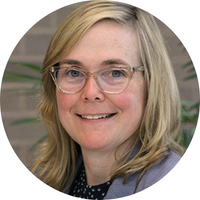
Beth Lorsbach is the Crop Protection Discovery Chemistry Leader for Corteva Agriscience™ and is responsible for developing goals and objectives based on discovery strategic vision. She also provides technical, personnel, and organizational management of the chemistry functional groups whose focus is to discover and characterize novel active ingredients for commercial development. Beth received her BA in chemistry in 1993 and a MS in Organometallic Chemistry in 1995 from Boston University. She continued her studies at the University of California, Davis, obtaining a PhD in Organic Chemistry in 1999.
Beth has authored over 94 patent applications, 21 external publications, and 28 conference presentations. She was recognized in 2009 as a finalist for Indy’s Best and Brightest Award, received the 2015 Rising Star Award from the American Chemical Society (ACS), and recently was named a 2019 ACS Fellow.
This article has been edited for length and clarity. The opinions expressed in this article are the author's own and do not necessarily reflect the view of their employer or the American Chemical Society.
Copyright 2020 American Chemical Society (All Rights Reserved)



